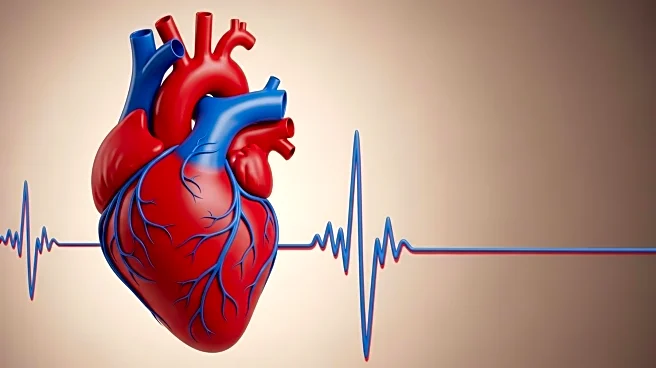What's Happening?
A recent study has highlighted that nearly 99% of heart attacks, strokes, or major cardiovascular events occur in individuals who had prior warning signs. These signs, often silent or dismissed, include symptoms such as chest discomfort, upper-body pain, breathlessness, cold sweating, nausea, rapid heartbeat, and lightheadedness. The study emphasizes that these 'red flags' can appear years before a major cardiovascular incident, suggesting that most heart attacks and strokes are not sudden or unpredictable but develop over time. The findings underscore the importance of recognizing and addressing these early symptoms to prevent serious health crises.
Why It's Important?
The study's findings are significant as they offer a potential pathway to drastically reduce the incidence of heart attacks and strokes, which are leading causes of death globally. By identifying and treating these early warning signs, healthcare providers can potentially prevent the majority of cardiovascular events, thereby saving lives and reducing healthcare costs. This approach could lead to a shift in public health strategies, focusing more on early detection and prevention rather than treatment after the fact. Individuals with these symptoms stand to benefit from early intervention, potentially avoiding life-threatening events.
What's Next?
Healthcare providers may need to develop new protocols for screening and monitoring patients for these early warning signs. Public health campaigns could be launched to educate the public about recognizing these symptoms and seeking medical advice promptly. Additionally, further research may be conducted to explore the effectiveness of various interventions in preventing cardiovascular events in individuals with these warning signs.
Beyond the Headlines
The study raises ethical considerations regarding patient education and the responsibility of healthcare systems to provide adequate resources for early detection and prevention. It also highlights the potential for long-term shifts in healthcare policy, prioritizing preventive measures over reactive treatments. Culturally, there may be a need to address lifestyle factors contributing to these warning signs, such as diet and exercise habits.










